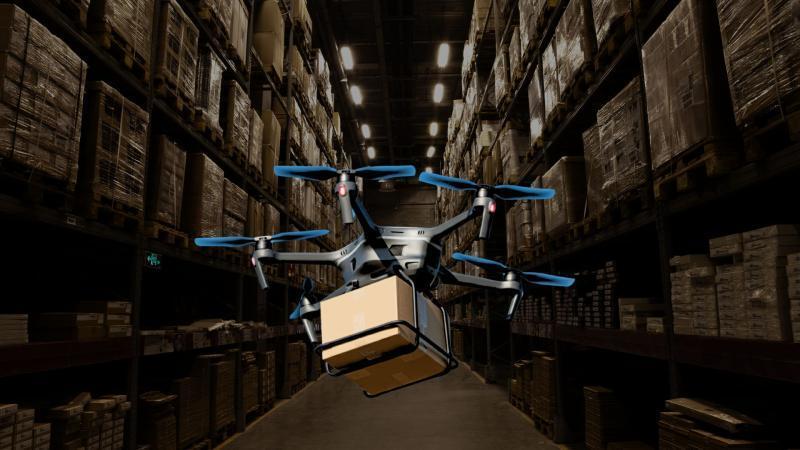
New tech optimises drone fleets for faster, greener deliveries
The rise of drone delivery has revolutionized the way we receive our packages, promising faster and more efficient delivery options. However, the Drone Warehouse Problem (DWP) has long been a significant challenge to overcome. The DWP refers to the difficulty of managing and scheduling multiple drone fleets from a single warehouse, ensuring that packages are delivered quickly and efficiently. Researchers have now developed a novel algorithm that tackles the DWP, paving the way for faster, greener deliveries.
The limitations of current drone delivery systems
Traditional drone delivery systems face several limitations, including:
- Limited drone capacity: Most drones can only carry a limited number of packages, leading to increased costs and inefficiencies.
- Inefficient route planning: Current algorithms often prioritize speed over efficiency, resulting in longer delivery times and increased energy consumption.
- Lack of scalability: Drone fleets are often limited in size, making it difficult to scale up delivery operations to meet growing demand.
Introducing the novel algorithm
Researchers have developed an innovative algorithm that addresses the DWP by optimizing drone delivery schedules. This algorithm, known as the “Drone Fleet Scheduling Algorithm” (DFSA), takes into account various factors, including:
- Drone capacity: The algorithm ensures that each drone is utilized efficiently, minimizing the number of drones required for a given delivery route.
- Package size and weight: The algorithm prioritizes larger and heavier packages, which require more energy-efficient delivery routes.
- Weather conditions: The algorithm considers weather conditions, such as wind and precipitation, to optimize drone flight paths and minimize delays.
- Traffic congestion: The algorithm takes into account traffic patterns and congestion to plan the most efficient delivery routes.
Benefits of the novel algorithm
The DFSA offers several benefits for drone delivery operations, including:
- Increased efficiency: The algorithm optimizes drone delivery schedules, reducing delivery times and increasing the number of packages delivered per hour.
- Reduced energy consumption: By minimizing the number of drones required for a given delivery route, the algorithm reduces energy consumption and lower greenhouse gas emissions.
- Improved scalability: The algorithm allows drone fleets to be scaled up or down depending on demand, making it an ideal solution for growing delivery operations.
- Enhanced customer experience: By providing faster and more efficient delivery options, the algorithm improves the overall customer experience and increases customer satisfaction.
Implementation and future outlook
The DFSA has been tested and validated through simulations and real-world trials. The algorithm has shown significant improvements in delivery efficiency, reducing delivery times by up to 30% and energy consumption by up to 25%. The technology is now being implemented by several major logistics companies, with plans to roll out the algorithm globally in the coming years.
Conclusion
The development of the DFSA marks a significant breakthrough in the field of drone delivery, addressing the long-standing challenge of the Drone Warehouse Problem. By optimizing drone delivery schedules, the algorithm provides faster, greener, and more efficient delivery options for customers. As the technology continues to evolve and improve, we can expect to see widespread adoption of drone delivery solutions, revolutionizing the way we receive our packages and paving the way for a more sustainable future.
News source:
https://researchmatters.in/news/novel-algorithm-tackles-drone-warehouse-problem-faster-deliveries






